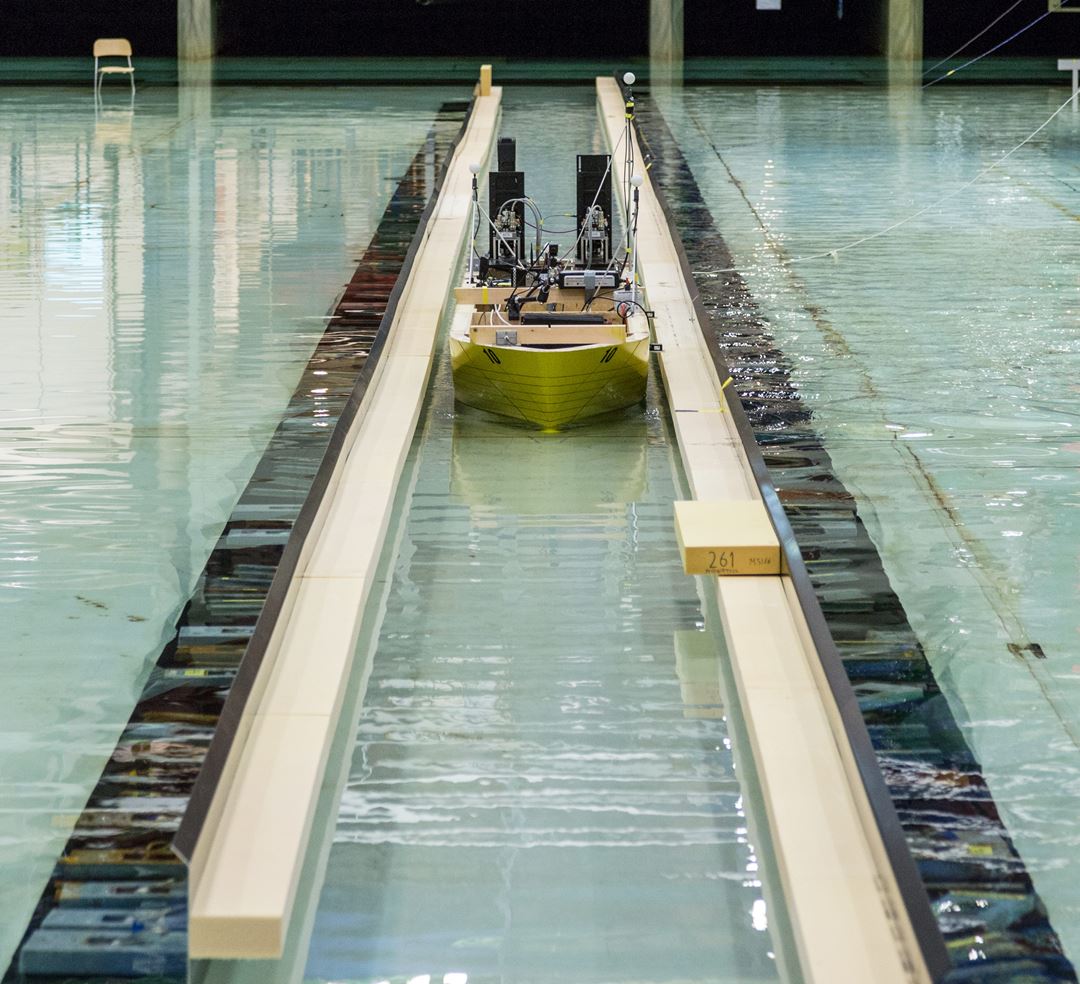The Norwegian Public Roads Agency (NPRA) has sought assistance from international experts in bridge construction, as well as leading experts in floating structures from the Norwegian offshore industry, in order to develop a safe and cost-effective fixed link concept for crossing wide and deep fjords.

"When it's completed, it will be the longest floating bridge in the world", says Xu Xiang, who is a member of the NPRA project team.
Ferry-free highway
Planning is well underway for the new E39 highway between Kristiansand in southernmost Norway, and the city of Trondheim in Mid-Norway. The plans require a fixed link, almost five kilometres in length, across the 550-metre deep Bjørna Fjord in Hordaland county. The crossing would be difficult using conventional bridge constructions, so this has resulted in an evaluation of alternative approaches.
"This is the first of many model-based experiments", says Øyvind Nedrebø, who is a construction design manager at the NPRA. "We're carrying out complex dynamic analyses in order to find out how the bridge will move in response to different types of waves", he says.
In collaboration with external engineers, the NPRA has developed a number of floating elements, called pontoons, which are now being tested at SINTEF Ocean's marine laboratory in Trondheim. Here the pontoons are subjected to extreme wave conditions. For example, the bridge will have to be able to withstand first a vessel collision, followed by exposure to an (abnormally extreme) 100-year storm, without the opportunity for repairs in the interim.
Demanding model experiments
"This is the first time that we've carried out model experiments of this kind at the marine laboratory", says Reza Firoozkoohi, who is Project Manager at SINTEF Ocean. "So this is very exciting. If the floating bridge over Bjørna Fjord is a success, it's likely that many others of its kind will be built in Norway in the future", he says.
Two different floating bridge concepts are being tested. The first involves the use of anchor lines attaching the structure to the sea floor, while the other involves attachment to both sides of the fjord. In purely technical terms, the bridge is described as a 'floating foundation suspension bridge'.
"What is special here is the presence of small fjord waves", says Nedrebø. "The fact is that we have very little information about these kinds of waves", he says.
How important is it to use model-scale tests for this design?
"It's important for us to have access to SINTEF's marine basin so that we can test the engineering development work as we progress, and thus confirm that we're on the right track", says Nedrebø. "This enables us to make adjustments at an early stage. "If we weren't permitted to use model-scale tests to make design checks as we go along, we would be talking about many billions of kroner in increased costs", he says.



